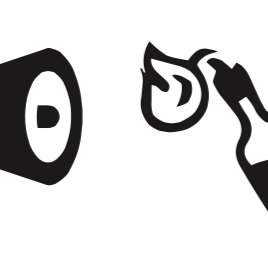
“One size fits all” punishments should worry all students.
Think for a moment about the worst person in your social circle. Not the worst person you consider a friend, but the worst person who somehow finds his way to all of the parties you attend—the one who spams the walls of all of the Facebook groups you belong to with memes that weren’t funny the first time you saw them back in eighth grade. The guy who REALLY wants to share his thoughts about immigration with you, or who dresses up as Osama Bin Laden for Halloween.
You duck them, you refuse to offer anything more than monosyllabic responses to their attempts at communication, and you block their content from your Facebook feed so you don’t have to read their grammatically deficient ramblings.
Know this though—based on what we’ve seen since the start of the dentistry scandal, there a chance that if this individual ever finds himself in Dalhousie University’s discipline crosshairs, you and the creep might as well be Butch Cassidy and the Sundance Kid.
Dal has suspended 13 men as a result of the posts on the Class of DDS 2015. At a recent press conference, the lawyer of whistleblower Ryan Millet suggests there are a number of students in the group who do not appear to have posted any of the objectionable content. The publically available screenshots seem to confirm this—many of the screenshots are available to read on The Coast’s website, with the names redacted but colour-coded to indicate participation levels. It appears from those photos that a small core of the group members accounted for almost all of the offensive posts.
According to a source inside the dentistry school, at the time Dal notified the dentistry ‘gentlemen’ of their suspensions, they provided them all with copies of the screenshots the DDS Facebook posts. The university allegedly claimed that these screenshots constituted obvious evidence of the professional misconduct of every member of the group. According to this source, there was no effort made to individualize the evidence for each student—the university treated each member of the group as guilty for all of the content, whether he had actually posted anything offensive or not.
Based on what we already know, these allegations are not surprising. At the Academic Standards Class Committee hearing of the group’s whistleblower Ryan Millet, five of six of the pieces of evidence cited by the university as the grounds for his suspension had nothing to do with Ryan—he didn’t post them, comment on them, or even like them. He hadn’t even seen two of them.
Dal’s position at the moment appears to be that all of the ‘gentlemen’ are guilty by association. They were members of a Facebook group. Inappropriate comments appeared in that Facebook group. Therefore they are all guilty of promoting offensive content. Simple, chilling math.
It doesn’t take any legal training to understand why this is a terrifying approach, especially in a society as connected as ours, and at a school where “networking” is as least as sacred an institutional buzzword as “leadership” or “innovation”. Delete your friends from Facebook, mash the unlike button until your profile has that fresh, unspoilt 2008 look, and be sure to lock yourself inside you apartment every night— you never know which degenerate’s picture you might stumble into the background of if you choose to attend the wrong party.
It’s not simply that this is a terrible policy for a university to adopt either—it is also likely that what they are doing would be shot down if subjected to judicial review by a real judge. Social media is a new enough phenomenon that there isn’t a comprehensive body of case law on it yet, but we can take some valuable direction from Pridgen v. University of Calgary, a 2012 decision of the Alberta Court of Appeal.
Pridgen dealt with the University of Calgary’s decision to find two students guilty of non-academic misconduct for making comments on a Facebook page set up to complain about a specific professor. The students in question made only one comment each, neither of which was particularly offensive, but they were found guilt in part simply for associating with a group that contained potentially defamatory content.
Aside from endorsing the more general rule that Charter protections of freedom of speech can apply to the decisions of university discipline committees—we’ll leave that point for now, because unwrapping it in our context would require its own article—the court specifically delved into the discussion about the appropriateness of holding students collectively accountable for the content of the Facebook groups to which they belong. The court held that the university’s decision was not reasonable, observing that “there is no attempt to assess the students’ comments on an individual basis”, while declaring that “it is unreasonable to hold the Pridgens accountable for the comments and actions of other students or one another”.
While the decisions of the Alberta Court of Appeal are not binding in Nova Scotia, appeal court decisions are nonetheless highly persuasive even across provincial lines. Dalhousie has no shortage of legal counsel at its disposal, so our academic leaders are surely aware of this case. If the school persists in attempting to hold all ‘gentlemen’ accountable for the actions of the few, it is opening itself up to some very costly litigation.
No one but the administration can say for certain why the university is handling the scandal in the way it is. As students who are observing this process unfold though, we should be concerned. If the university really is basing crucial decisions about the fates of its students’ decisions more on concerns about brand damage than the “fairness” and “justice” that form the core of its media relations mantra, then we all better hope we don’t find ourselves on the wrong side of the media microscope.







